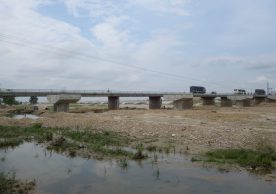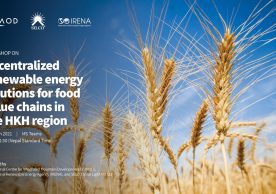For Anita Rai, the only source of drinking water is Dokung Dhara – a spring that is an hour’s walk away from her home in Suldung Kamling Gram Panchayat, Soreng District, Sikkim. The task of fetching water is so laborious that Rai – and others tasked with this drudgery, chiefly women, who make the trip at least three times a day – just collect rainwater during the monsoon. “It’s such a long way, and the path is really slippery during the rainy season. So we just filter rainwater and boil it before drinking,” shares Rai.
Samrita Subba, who makes the trip to her nearest spring – Kuwa Pani – from Suldung village, Sikkim, makes it clear that groundwater is clearly the better alternative. “The water from this spring tastes quite good. We boil it before drinking, and I don’t know of anyone who has fallen ill because of it,” she shares as she collects water from the spring. Seventeen other households from Suldung village draw water from the same spring for their daily use.
Women like Anita Rai and Samrita Subba and their communities depend on safe, reliable water supply from springs – the most traditional of sources. We need to ensure that our groundwater systems are functioning well and our groundwater resources are preserved and sustainably used.
The real problem for such households is during the dry months (around October–May), when groundwater, an invisible resource usually taken for granted, depletes. Seasonal springs dry up, and perennial springs experience decreased flow. Then, making the trip is the least of people’s worries.
Drying, neglected resource
Springs have historically been the primary source of groundwater for many mountain communities across the Hindu Kush Himalaya (HKH). In recent decades, there is increasing evidence of drying up of springs or reductions in spring discharge in Sikkim and across the mid-hills of the HKH region as a result of climate change, rapid urbanization, deforestation, land use change, and changes in precipitation, among a host of other factors. This is worrying for mountain communities who are facing acute water stress, and whose lives and livelihoods depend on spring water. According to a NITI Aayog report, about 50 million inhabitants depend on springs in the Indian Himalayan Region, where nearly 50% of springs have already dried up or have reduced discharge. The report further states that 40% of the rural population in the IHR does not have access to safe and adequate drinking water. Anita Rai and Samrita Subba fall under this category.

Springs are important for consumption, agricultural and economic activities, ecosystem services, biodiversity, and have great cultural significance. Springs also have hydrological importance particularly in non-glaciated regions as they sustain the base flow of rivers and riverine ecosystems. According to a study conducted in central Nepal Himalaya, groundwater contribution is six times higher than that of glaciers and snow melt. Despite the clear importance of groundwater in the region, the use, management, and preservation of these natural springs are often neglected at the policy level. There is still inadequate scientific data on groundwater and springs in the mountains, which limits model-based studies in the region. Such studies are important for devising ways in which groundwater resources can be sustainably managed. Knowledge on the contribution of glacier melt and rainfall to springs and groundwater is also limited.
Reviving springs
To address the issue of water stress in the mid hills and mountains due to drying up of springs across the HKH, we collaborated with partners to revive springs and advance springshed management based on a multidisciplinary springshed management approach: a six-step methodology that combines science and community knowledge. We developed this protocol with our partners, and implementation also involves partners and communities: Dhankuta Municipality and Chhathar Jorpati Rural Municipality are implementing springshed management in Dhankuta District, Nepal, through our Koshi Basin Initiative, while Namobuddha Municipality is working in Kavrepalanchok District through our Resilient Mountain Solutions Initiative.
In Kavrepalanchok District, following our recharge interventions, we have observed increased discharge in the local spring Bhagbate Pakhako Kuwa, which had almost dried up in recent years. Twenty-two households are dependent on this spring, which shows just how important such revival initiatives are.
We are also joining hands with partners to implement an action research project in four states of the Indian Himalayan Region – Uttarakhand, Himachal Pradesh, Sikkim, and Manipur – for advancing scientific and socially inclusive springshed management approaches, improving policies and programmes in springshed management, and developing decision support systems to build resilience for water security.

Spring conservation efforts should consider the hidden groundwater resource, not limiting only to source protection. It is important to understand that springs are merely the visible source of the invisible groundwater resource. There is a need to raise awareness among communities, academia, and relevant policy and decision makers on the invisible groundwater resource that is stored in aquifers and its linkage with springs. Since groundwater and aquifers function regardless of administrative or political boundaries, cooperation across administrative boundaries is very important for managing groundwater and springs. Local and national governments must include springshed management in their plans and policies, along with the allocation of sufficient budgets, to address water security challenges in a sustainable way. In addition, the springshed management approach should be further strengthened with more scientific research, community knowledge, and integrating gender equality and social inclusion components.
Women like Anita Rai and Samrita Subba and their communities depend on safe, reliable water supply from springs – the most traditional of sources. While these sources need to be diversified, we do need to ensure that our groundwater systems are functioning well and our groundwater resources are preserved and sustainably used.














